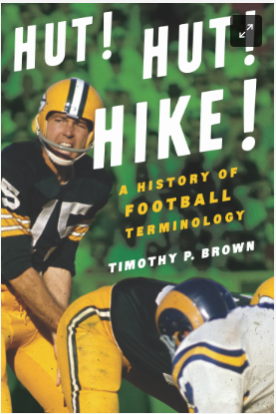The game of baseball has a long and storied history of its players, teams and managers. The stats, the championships, pitching duels and so much more make this one of the most interesting items to study and watch.
Sports History
Harold Baines Baseball Hall of Fame Slugger
The six -time MLB All-Star who played for the Chicago White Sox, Texas Rangers, Oakland A's, and Baltimore Orioles. He was in the 2005 World Series with Chicago.
Harold Baines, the first overall pick in the 1977 MLB Draft, carved out a 22-year career as a designated hitter and right fielder, primarily known for his three stints with the Chicago White Sox. Here's a glimpse into his impressive journey:
Early Promise and White Sox Dominance (1980-1989):
-Lived up to the draft hype, establishing himself as a reliable right fielder with a smooth swing and consistent power.
-Earned six All-Star selections (1985-1987, 1989, 1991, 1999) and led the American League in slugging percentage in 1984.
-Remained a key offensive force for the White Sox, holding franchise records for home runs and RBI until the 1990s.
Career Odyssey and Return to Chicago (1990-2001):
-Bounced around various teams like the Texas Rangers, Oakland Athletics, Baltimore Orioles, and Cleveland Indians, showcasing his consistency wherever he went.
-Rejoined the White Sox in 1996 and later in 2000, becoming a valuable veteran presence and fan favorite.
-Ended his career back in Chicago, contributing to their 2005 World Series championship.
Legacy: A Beloved Figure and Statistical Giant:
-Retired with a lifetime batting average of .289, accumulating 2,866 hits, 384 home runs, and 1,628 RBI.
-Held major league records for career hits and games played as a designated hitter until 2013 and 2014, respectively.
-Although not elected to the Baseball Hall of Fame, Baines remains a beloved figure in Chicago and a respected slugger across baseball history.
Red Ruffing Hall of Fame Baseball Pitcher
Ruffing was not on the mound in Boston, suffering through an agonizing record of 39-96 in Beantown. The Red Sox traded struggling pitcher to the rival New York Yankees, where the hurler turned things around in his career pitching as the Yankees' ace through 1946.
Ruffing is most remembered for his time with the highly successful Yankees teams just before World War II. Red was a member of six World Series championship teams with the Yankees. He also appeared in six MLB All-Star Games and was inducted into the Baseball Hall of Fame in 1967.
The Yankees dedicated a plaque to Ruffing in Monument Park in 2004. MLB Jersey 15. MLB Jersey 21. MLB Jersey 18. MLB Jersey 22. MLB Jersey Number 34.
Ron Santo Legendary Chicago Baseball Icon
From Catcher to Third Base Star (1960-1963):
-Drafted as a catcher in 1959, he transitioned to third base, showcasing exceptional fielding skills and a powerful throwing arm.
-Debuted with the Chicago Cubs in 1960, quickly becoming a fan favorite for his hustle and infectious energy.
-Earned All-Star selections in 1963 and 1964, laying the foundation for a remarkable career.
Dominating Hitter, Facing Adversity (1964-1974):
-Established himself as an offensive force, winning the National League batting title in 1964 (.339) and leading the league in walks four times.
-Hit over 30 home runs four times, showcasing his well-rounded hitting skills.
-Battled Type 1 diabetes, becoming an inspiration for millions facing chronic illnesses.
-Despite never playing in a World Series, his dedication and leadership endeared him to Cubs fans forever.
Defensive Wizard and Hall of Fame Recognition (1975-2010):
-Won five Gold Glove Awards for his exceptional fielding at third base, his agility and anticipation setting him apart.
-Elected to the Hall of Fame in 2012, recognizing his immense impact on the game and the Cubs organization.
-Continued to advocate for diabetes awareness and remained a beloved figure in Chicago until his passing in 2010.
Beyond the Stats:
-Beyond his impressive .277 batting average, 342 home runs, and 1,331 RBI, Santo's legacy lies in his spirit.
Ron Santo played for the Chicago Cubs from 1960 through 1973 and the Chicago White Sox in 1974. Santo was a nine-time All-Star and five-time Gold Glove winner at third. He was inducted into the Baseball Hall of Fame and is one of the top MLB players to have ever worn the Jersey Number 10.
Earl Weaver
This legend guided his team, the Baltimore Orioles to the World Series title in 1970. Funny thing is that Weaver after playing in minor league baseball, he retired without playing in Major League Baseball but became one of his era's top managers.
Lee Smith HOF Relief Pitcher
1947 WS Game 6 - Al Gionfriddo robs Joe DiMaggio of homer video
In the bottom of the sixth inning of Game 6 of the 1947 World Series, the score was tied 8-8 with two outs and runners on first and second for the New York Yankees. The tension was palpable as Joe DiMaggio, Yankee legend and "Joltin' Joe," stepped up to bat against Dodgers pitcher Joe Hatten.
DiMaggio launched a powerful line drive deep into left-center field. It seemed destined to be a game-changing extra-base hit, potentially putting the Yankees ahead and potentially changing the course of the Series.
However, Dodgers manager Burt Shotton had made a risky decision earlier in the inning, replacing regular left fielder Eddie Miksis with defensive specialist Al Gionfriddo. This gamble paid off in spectacular fashion.
Gionfriddo, known for his speed and acrobatic catches, sprinted back towards the outfield wall, tracking the ball's trajectory. With a leaping, one-handed grab, he snagged the ball just before it hit the ground, robbing DiMaggio of a potential homerun and securing the final out of the inning.
This iconic catch, often referred to as "The Catch," not only preserved the score and momentum for the Dodgers but also became a turning point in the Series. The Dodgers went on to win Game 6 and eventually the entire World Series, etching Gionfriddo's name in baseball history.
Mickey Cochrane Baeball Hall of Fame Catcher
From Multi-Sport Star to Baseball Legend:
Born in 1903, Cochrane excelled in multiple sports at a young age. Initially drawn to football and basketball, he eventually chose baseball. After a standout college career at Boston University, he joined the Philadelphia Athletics in 1925. Despite never leading the league in batting average, his consistent hitting, exceptional on-base skills, and power made him a valuable offensive asset.
A Mastermind Behind the Plate:
Cochrane's true brilliance, however, shone behind the plate. He mastered game calling, anticipating pitches, and guiding his pitchers to success. His leadership extended beyond strategy. He was known for his relentless work ethic and fiery competitive spirit, inspiring his teammates to give their all on the field. This combination of skill and leadership made him a cornerstone of the famed "Connie Mack Athletics" dynasty of the 1920s and 30s.
A Champion's Pedigree:
Cochrane was pivotal in capturing three World Series titles with the Athletics (1929, 1930, and 1931). He formed a legendary battery with pitcher Lefty Grove, and their communication and on-field connection gave opposing hitters nightmares. In 1928 and 1934, he earned the prestigious American League Most Valuable Player Award, solidifying his status as one of the game's elite players.
A Career Cut Short and a Legacy Secured:
Tragically, Cochrane's career was cut short in 1937 due to a brutal beanball incident. Though he attempted a comeback, the severity of the injury forced him to retire. However, his impact on the game transcended his playing days. He managed the Detroit Tigers for several seasons and became a respected coach, sharing his knowledge and fiery spirit with the next generation of players.
A Hall of Famer and an Inspiration:
Inducted into the National Baseball Hall of Fame in 1947, Mickey Cochrane inspires catchers and baseball fans. He embodied the ideal catcher: a skilled defender, a leader on the field, and a crucial offensive contributor. His legacy lives on through his achievements, the dominance of the teams he played for, and the respect he commanded from teammates and opponents.
Mickey Cochrane life and career biography. Born April 6, 1903, in Bridgewater, Massachusetts, was Baseball Hall of Fame catcher Mickey Cochrane. Cochrane played for the Philadelphia A's and Detroit Tigers and managed the Detroit Tigers 1934–38. Mickey was an MLB All-Star 1934and 35; won World Series Titles 1929, 1930, and 1935; American League MVP in 1928 and 1934.
Duke Snider The Silver Fox and a Dodgers Legend
Born September 26, 1926, in Los Angeles, California was Baseball Hall of Fame outfielder Duke Snider. This legend was an eight-time MLB All Star. Snider was on the World Series Champion 1955, 59 with the Brooklyn and Los Angeles Dodgers. He also later played for the New York Mets and the San Francisco Giants.
Early Years and Rising Star: Born in Los Angeles in 1926, Snider's talent was evident from a young age. After a brief minor league stint, he joined the Dodgers in 1947, initially struggling to find his footing. However, his potential shone through, and by 1951, he emerged as a force to be reckoned with.
A Career Hallmarked by Power and Consistency: With his unorthodox stance and effortless swing, Snider became a feared slugger. He clubbed 40 or more home runs in five consecutive seasons from 1953 to 1957, averaging 42 homers, 124 RBIs, and a .320 batting average during that stretch. He earned eight All-Star selections, won a Silver Slugger Award, and finished his career with 407 home runs, ranking him 15th all-time at the time of his retirement.
A Key Pillar of the Dodgers' Dynasty: Snider played a crucial role in the Dodgers' dominance during the 1950s. He was part of the legendary batting order known as "Murderers' Row," alongside Jackie Robinson, Pee Wee Reese, and Gil Hodges, leading the team to World Series victories in 1955 and 1959. His calm demeanor and leadership qualities earned him the respect of teammates and fans alike.
Adapting to a New Coast: When the Dodgers relocated to Los Angeles in 1958, Snider's production dipped slightly, likely due to adjusting to a new ballpark. However, he remained a valuable contributor, leading the team in home runs in 1960 and helping them reach the World Series in 1963.
Buck O'Neil
O'Neil's playing career began in 1937, bouncing around before finding a home with the Kansas City Monarchs in 1938. He carved out a solid career as a first baseman, with four seasons batting over .300 and a career average of .288. World War II interrupted his playing time, but he returned strong, even managing the Monarchs for a period.
However, O'Neil's influence extended beyond the batter's box. He had a keen eye for talent, later becoming a scout and signing future Hall of Famers like Lou Brock. He also broke barriers in 1962, becoming the first Black coach in Major League Baseball history.
Born November 13, 1911, in Carrabelle, Florida, was Baseball Hall of Fame First Baseman Buck O'Neil. This legend was a three-time All-Star and was on the Negro League World Series Champion Kansas City Monarchs of 1942. Buck spent 10 of his eleven years in baseball with the Monarchs but played his first year as a Memphis Red Sox roster member. O'Neil became a scout and then the first African-American coach in the MLB.
Omar Visquel Legendary Shortstop
-Defensive Wizard: Widely considered one of the greatest fielding shortstops ever, Vizquel boasts an MLB record 11 Gold Glove Awards, including a historic nine consecutive wins from 1993 to 2001. His smooth glovework and exceptional range at shortstop were a sight to behold.
-Durability and Consistency: Vizquel holds the record for most games played at shortstop (2,709) and is the leader in total double plays turned by a shortstop. This incredible consistency speaks volumes about his dedication and longevity.
-Solid Offensive Contributor: While defense was his calling card, Vizquel wasn't a slouch at the plate. He compiled a respectable .272 lifetime batting average with over 2,800 hits, 400 stolen bases, and the ability to contribute offensively throughout his career.
-Accolades and Accomplishments: A three-time All-Star, Vizquel played for several teams including the Cleveland Indians, San Francisco Giants, and Chicago White Sox. Though he never won a World Series championship, his defensive brilliance and stellar career make him a deserving candidate for the Baseball Hall of Fame.
Born April 24, 1967, in Caracas, Venezuela, was legendary MLB Shortstop Omar Visquel. 24-year Major League Baseball career, Vizquel played for the Seattle Mariners, Cleveland Indians, San Francisco Giants, Texas Rangers, Chicago White Sox, and Toronto Blue Jays.
Baseball's all-time best fielding shortstops, Vizquel won 11 Gold Glove Awards, including nine consecutive from 1993 to 2001. Among shortstops, his .985 fielding percentage is tied for highest all-time, he is the all-time leader in games played, and the all-time leader in double plays turned. Visquel is one of the top MLB players to have worn the Number 13 Jersey. one of the top MLB players to have worn the Number 11 Jersey. MLB Number 11 Jersey
February 7 Jersey Numbers

Here are some jersey numbers in team sport history that stuck out. February 7, 1949 - Number 5, Joe DiMaggio became the first ball player to earn $100,000 a yearas he did so under contract with the New York Yankees . February 7, 1958 - The Brooklyn Dodgers official...
- The use of a "banner" counts as 10 words!
February 6 Jersey Numbers
Sports history is made every day of the year. We will preserve at least a small sampling from some great athletes every day based on the uniform number they wore. 31 - 9 - 14 - 83 - 7 - 16 - 22 - 80 - 11 - 84 - 10 - 83 - 12 February 6, 1926 - St Louis Browns acquire catcher Wally Schang from ...
February 5 Jersey Numbers

Here is what happened in Sports Jersey History on February 5: Kareem hits a new NBA high, Hines hauls in a big one and Bob Douglas is honored. Our Sports Jersey Take of the Day is from historian Joe Ziemba. Listen in to learn more about sports history along with me from the unif...
- The use of a "banner" counts as 10 words!
The Oregon Agricultural Hard Court Stars
(image) Members of the 1922 Oregon Agricultural College men's basketball team. From left to rightː Gill (forward), Hjeite (enter), and Feraley (forward), from February 5, 1922. This image is courtesy of Wikimedia Commons. We know the OAC by a different name today, Oregon State. The Oregon Ag...
The 1897 Strathcona Hockey Team
.jpg?https://jerseydispatch.com/pfeL/p/c312642c0431e75b485e432232c99c1c/website/Sports-History-Photo-of-the-Day/February-Images/February-4-Image/images/.Strathconas_First_Hockey_Team_(21879505322).jpg)
Formal portrait of Strathcona's First Hockey Team (1897). Stratchcona resides in British Columbian Province, and is the oldest residential neighbourhood of Vancouver, (image) Some players are labeled by number. 1. Bob Blain 2. Jim Blain 3. Billy Sharkles 4. Fred Richards 5. J. McIn...
- The use of a "banner" counts as 10 words!
February 4 Jersey Numbers

Here is what happened in Sports Jersey History on February 4 : We talk about the great goaltending of Grant Fuhr and Ray Durbin of Row One Brand stops by to to discuss two of his favorite number 40s. Listen in to learn more about sports history along with me from the uniforms and jers...
- The use of a "banner" counts as 10 words!






